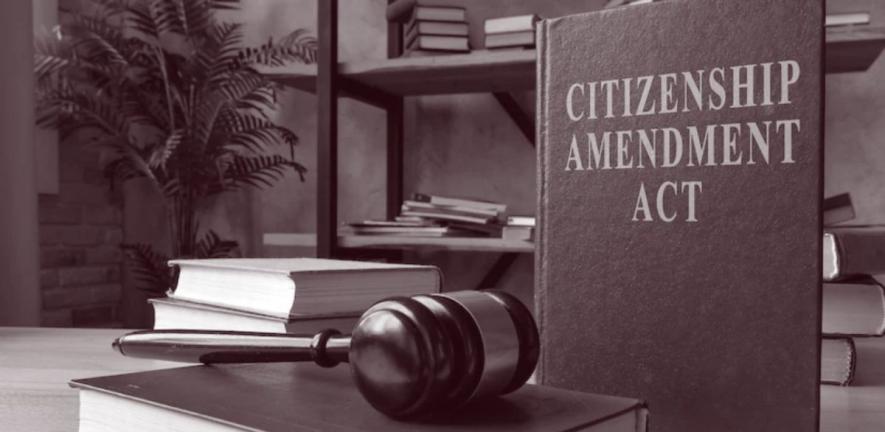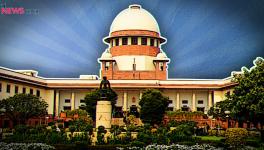Subjecting the CAA Rules to Proportionality

The various constitutional challenges to the Citizenship Amendment Act (CAA) have been widely considered. While the usual citizenship naturalisation route required 11 prior years of residency, the CAA lowered this to five years for persons from exclusively listed religions, notably excluding Islam. Afterwards, such individuals would no longer be labelled as ‘illegal immigrants’.
With national elections impending, the Union government recently notified the CAA Rules to provide the procedure for implementing the CAA. This notification prompted urgent hearings at the Supreme Court.
The original petitions and the extensive academic discourse since raised concerns on how the foregoing religious exclusions violate the right to equality, especially when read in light of secularism— a basic feature of India’s Constitution.
In this piece, we add another perspective to these challenges, one that allows us to look at the machinery implementing the CAA and its actual impact on the ground.
We argue that with the tedious and vague procedure emerging from the CAA Rules, the time is ripe to subject this citizenship project to a test omitted in mainstream discussions— proportionality.
With national elections impending, the Union government recently notified the CAA Rules to provide the procedure for implementing the CAA.
We show its normative and strategic potential for the petitions challenging the CAA. Our analysis also illustrates the utility of the test for adjudicating discrimination cases generally.
What the CAA Rules say
The CAA Rules are a form of executive-made legislation that amended the Citizenship Rules of 2009, creating the procedure by which persons from the specified groups could apply for faster naturalisation.
To substantiate one’s application, four documents are needed: first, proof that the person is a national of the concerned three countries (Schedule IA), and then proof of entry into India before the cut-off date of December 31, 2014 (Schedule IB).
The documents that may be used as proof for these purposes are exhaustively listed. Further, one needs to make affidavits attesting to the correctness of the information submitted and obtain a certification from a ‘locally reputed community institution’ as evidence that they belong to the beneficiary religions (Schedule IC).
There are two stages of the application processing. Once these applications are submitted on the designated online portal, a ‘district committee’ is tasked under inserted Rule 11A(3) to “verify” the documents and forward the application to the ‘empowered committee’.
Then, as per Rule 13A(1), the empowered committee will scrutinise whether “the applicant satisfies all the conditions laid down”. Pursuant to Rule 13A(2), it will assess “the suitability of the applicant that he is a fit and proper person”, and if they find the candidate suitable, the committee “may grant him the citizenship of India”.
Demystifying the CAA Rules
Several procedural complications arise from this information. Seemingly, the district committee and the empowered committee will both perform similar functions: verifying applications and their documentation.
It is unclear in what respects the role of the empowered committee would differ from the district committee, or if it is indeed meant only to give a second layer of cross-verification.
Importantly, the phraseology in Rule 13A(2) requires the empowered committees to examine if applicants are “fit and proper”. This phrase is left undefined and risks an interpretation that would give empowered committees subjective discretion in making value judgments about the applicants.
Such subjective discretion could result in citizenship denial on account of the committee members’ ideologies and biases. In our view, this interpretation is unpersuasive, given the apparent context of the objective criteria of one’s minority identity and date of entry into India.
Our position is reaffirmed by the translation of “fit and proper person” in the Hindi counterpart of the Rules: “उपयुक्त व्यक्ति”, which is narrower in its ordinary meaning [see Rule 13क(2)].
However, the very fact that the CAA Rules necessitate this complex interpretive exercise shows the vagueness of the procedure devised. The committees, as per an executive order, will comprise bureaucrats trained in fields like census or post office matters.
We argue that with the tedious and vague procedure emerging from the CAA Rules, the time is ripe to subject this citizenship project to a test omitted in mainstream discussions— proportionality.
When even lawyers remain puzzled by the meaning of the CAA Rules, it is hard to imagine any consistency or foreseeability in the bureaucrats’ understanding thereof, even if they have the best intentions.
More fundamentally, it seems the State itself is confused about the scope of the CAA Rules. India’s second-highest legal officer informed the Supreme Court that the final decision on the grant of citizenship would be made by the Union, rather than the empowering committees.
Yet, Rule 13A expressly gives this mandate to the committees, with no provision for the Union government’s involvement. These contradictions put in serious doubt the credibility of the Rules and the larger CAA project.
In any event, a larger problem arises from the documentation requirements of the CAA Rules. Schedules IA and IB of the CAA Rules accept only State-sanctioned documents as proof of former nationality and date of entry.
Citizenship law experts have highlighted that this scheme will be of little relief to its beneficiary religious groups, even setting aside the question of the exclusion of groups such as Muslims.
Persecuted persons are unlikely to have ever had or continue to have access to State-issued documents such as passports or residence records and may have willingly damaged such documentation to hide their identity for fear of violence.
Likewise, it is curious that the word “persecution” or synonymous terms do not appear anywhere in the CAA or the 52-page-long CAA Rules. With the committees comprising bureaucrats trained in technical fields rather than asylum matters, and in the absence of any guiding principles on the sensitivity necessary in verifying applications involving persecution, the CAA Rules engender a “bureaucratic nightmare” for applicants.
The role of proportionality
Having laid out this detailed background of the CAA scheme, we now turn to the fourfold test of ‘proportionality’.
We suggest it captures not only the larger normative problems of the exclusionary nature of the CAA, but also the tedious and unhelpful procedure created by the CAA Rules.
The proportionality test has already been championed by the Supreme Court in cases concerning the rights to life and free speech respectively.
It is not yet well-established for the right to equality— the main right of contention here. Thus, we first briefly discuss why the turn to proportionality is needed in equality cases.
In respect of the right to equality, the traditional tests for justifications in India have involved assessments of ‘reasonable classification’ and ‘arbitrariness’. The classification test requires the existence of an intelligible differentia for the differential treatment and a rational nexus between this differentia and the State’s purpose. The argument for how the religiously exclusionary basis of the CAA violates these two conditions is well-known.
Interestingly, Juliette Gregory Duara, a senior fellow at the Kenan Institute for Ethics, Duke University, US, shows that this inquiry resembles the first two limbs of proportionality— particularly the existence of a legitimate aim, and the suitability of the State’s measure for achieving this aim.
It is unclear in what respects the role of the empowered committee would differ from the district committee, or if it is indeed meant only to give a second layer of cross-verification.
However, the proportionality test subjects State measures to higher scrutiny on two more distinct bases— the necessity limb and, most crucially, the balancing stage.
Thus, Tarunabh Khaitan, professor of public law and legal theory at the University of Oxford, UK, argues that the reasonable classification test has an inherently low threshold, with the potential scrutiny of the “necessity and balancing aspects” being “completely ignored”.
This is not to say that formalising judicial scrutiny using these two limbs would be a breakthrough. For example, the considerations usually featured in the arbitrariness test can be examined in a structured and sequential manner through the various limbs of proportionality.
This was illustrated in Justice Chandrachud’s landmark judgment in Puttaswamy I, where he subsumed the contents of concepts like ‘manifest arbitrariness’ within proportionality (¶180).
Cohesively reframing these elements through proportionality will bring robust and rigorous judicial scrutiny of discriminatory State measures. For these reasons, we now attempt to test the CAA and the CAA Rules by reference to proportionality.
Applying Proportionality
The most unique contribution of proportionality is in enabling courts to assess the overall moral and factual costs associated with right infringements in the ‘balancing’ stage.
This stage requires that the infringement of rights by a State measure, should, on balance, be outweighed by the larger public good achieved thereof. There are two ways in which this analysis may play out— in principle or by factual assessment.
We begin with the ‘in principle’ approach, which adds to the normative challenge to the CAA’s exclusionary design. As a basic feature of India’s Constitution, secularism can be used as an interpretive means for the meaning of equality.
Ever since the CAA was enacted, many have argued that the conditioning of citizenship on religious grounds without reason is at odds with secularism. For example, the scheme excludes Muslim minorities who face persecution even in Islamic countries— such as the Ahmadis in Pakistan.
Likewise, other persecuted minorities also enter India from countries other than Afghanistan, Bangladesh and Pakistan. They too have been denied the benefit of a necessary fast-tracked process, albeit on the basis of geography rather than religion.
Subjective discretion could result in citizenship denial on account of the committee members’ ideologies and biases.
Critics argued that the normative cost to secularism and equality assumed in this naturalisation project is inherently too high to justify. This argument, when framed through the lens of ‘balancing in principle’, would result in the scheme being struck down for its inherent inability to balance these normative costs.
However, with the notification of the CAA Rules, we see the possibility of assailing this project by attempting to balance through a factual assessment. The Supreme Court may now take cognisance of the procedural labyrinth of the CAA Rules, such as its demanding requirement of State-issued documents.
This complicated scheme, as discussed, will result in a few persons actually being able to benefit from it. Further, the online format of the application process indirectly excludes persecuted migrants without technical means.
Even though applicants are required only to be conversant with any one of the 22 languages listed in India’s Constitution [Rule 10A(1)(g)(ii)], this portal is presently only accessible in Hindi or English.
Since most migrants would find this process inaccessible, we find that on one scale of balancing, little public good will be achieved. Conversely, their suffering and exclusion would become part of the scale of infringements emerging from the CAA.
In parallel, controversially at the behest of the Supreme Court Orders, the Indian State previously conducted an exercise of citizenship deprivation in Assam that arbitrarily excluded 1.9 million Indian citizens, primarily Muslims.
Most of these precariously placed persons lived much or all of their lives in India. If they now wish to seek refuge through the CAA, they face the impossible burden of proving ties to Afghanistan, Bangladesh and Pakistan, showing arguable violations of equality.
Apart from equality issues, now that the application process is digitised, there are also data protection risks arising from the CAA Rules, implicating the right to privacy. By all these accounts, on balance by factual assessment, the proportionality test would allow the Supreme Court to strike down the scheme.
This analysis would not be possible through traditional tests of equality. It would enable the court to make a holistic scrutiny of the CAA project in its entirety.
While we have focused here on the balancing stage, other steps of proportionality could also be used to challenge the scheme. For example, consider again the revelation that the CAA Rules will give little relief even to the beneficiaries it does include.
The test of proportionality is not yet well-established for the right to equality— the main right of contention here.
Before one even reaches the fourth stage of balancing, this would suggest a violation of the second step of proportionality— suitability, since the State’s choice of means shows no rational nexus with its purported legitimate aim of welcoming persecuted minorities.
Thus, considering these various prospects, the proportionality test deserves immediate attention from litigants and scholars challenging the CAA and the CAA Rules.
Yet the key takeaway is that the balancing limb would allow the court to review the whole transaction of the citizenship project— not only in the abstract but in its concrete implementation.
Conclusion
The CAA scheme shows how an examination of equality violations through the test of proportionality allows for a holistic, fuller and precise account of the public good or harm achieved by the State, bringing about a culture of justification.
It gives space to consider the concrete lived experiences of those afflicted by the processual struggles arising from the scheme, as well as larger normative questions on constitutional values such as secularism.
Critics argued that the normative cost to secularism and equality assumed in this naturalisation project is inherently too high to justify.
As hearings resume on the project after four years, with the CAA Rules being notified concerningly close to national elections, we hope the court takes this momentous opportunity to demonstrate its ability to hold the State to account for its exclusionary policies.
Abhijeet Shrivastava is an LLM Candidate at the University of Cambridge and a graduate of Jindal Global Law School.
Rudraksh Lakra is an Associate at Ikigai Law and a graduate of Jindal Global Law School.
Get the latest reports & analysis with people's perspective on Protests, movements & deep analytical videos, discussions of the current affairs in your Telegram app. Subscribe to NewsClick's Telegram channel & get Real-Time updates on stories, as they get published on our website.
























